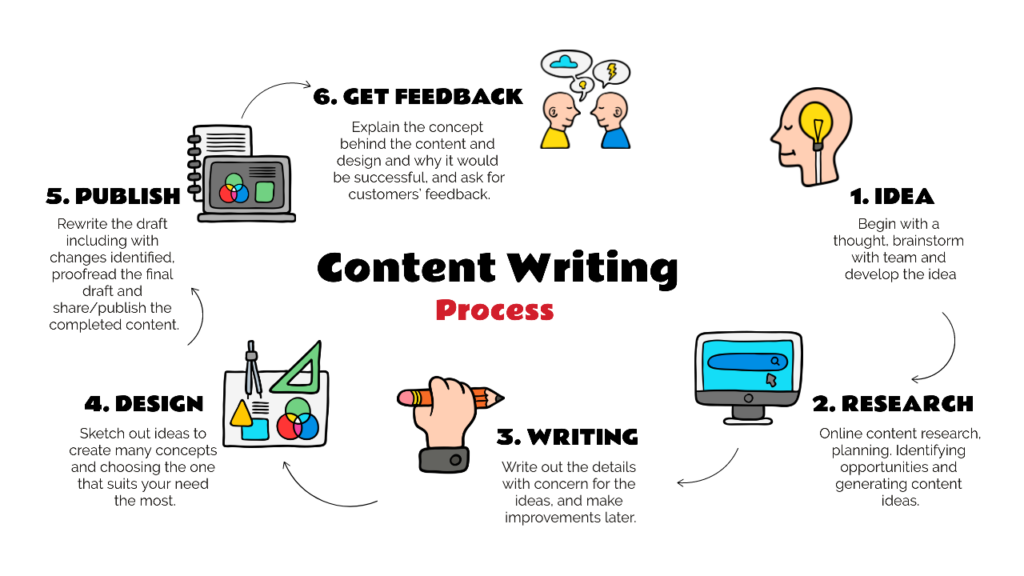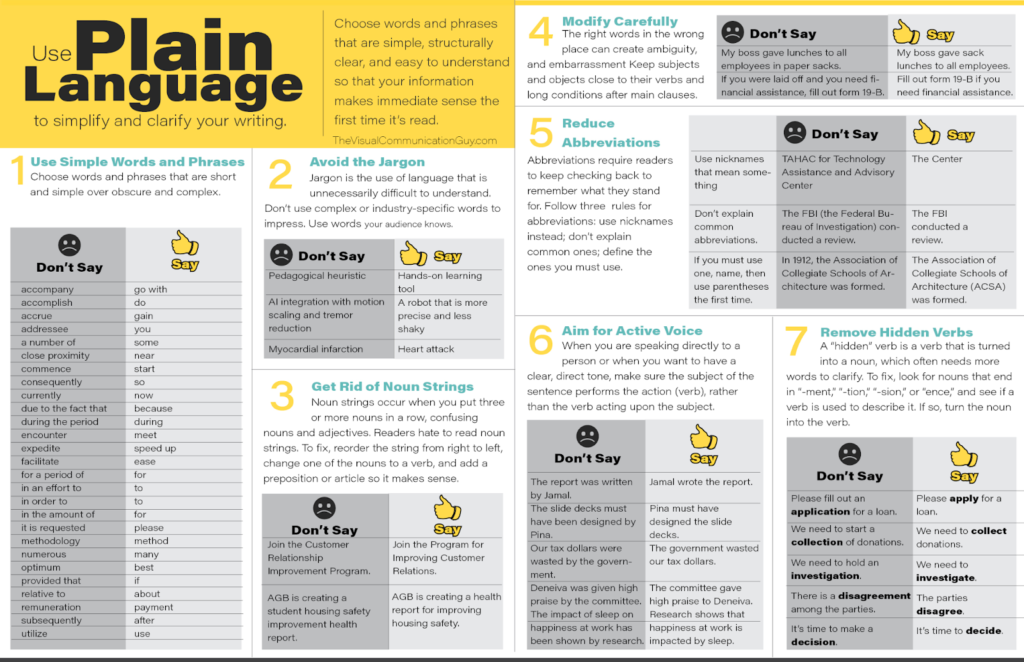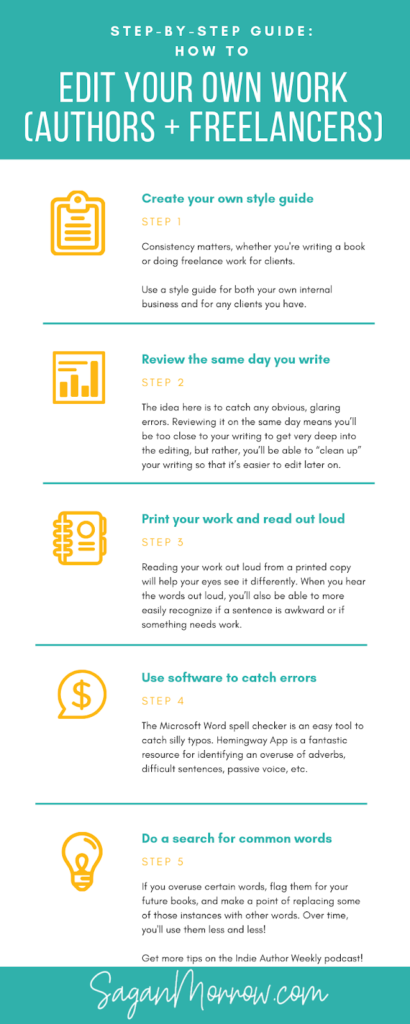
Table of Contents
- How to Develop Content Writing Skills
- Key Takeaways
- Conclusion
- FAQs
Content writing may sometimes seem like an overwhelming task to a content marketer. Adding structure to your thoughts and presenting them in a way that makes people enjoy the write-up makes for good content writing skills.
As content marketing becomes one of the most important marketing verticals in the digital era, creating valuable content has suddenly acquired the front seat. Content writing is “the” skill a good marketer needs to possess to be successful at their job.

How to Develop Content Writing Skills
Let’s have a look at some important content writing strategies during the three most important stages of content writing.
1. Before you start writing
Before you begin to write, it is crucial to gather your thoughts and have a clear idea about the subject. Here are a few tips for improving your content writing strategy in the first stage.
Read a few writing samples
This is one of the best ways to improve content writing skills. The step is quite significant when writing for a brand, a client, or a person. It’s easy to explore new content writing structures when writing for your own blog, as you are free to experiment. But when writing for others, you are expected to precisely encapsulate the tone of voice and the design theme of the brand/client.
It is a good practice to read a few writing samples of your client’s pre-existing work before you sit down to create new content for them. This process will ensure you are fine-tuning yourself with the same writing style.

Identify your target audience
Before starting to write, it is important to get a proper briefing on the assignment from your client. Each brand has a different set of a target audience, and it would decide the tone of voice of your write-up. While an article meant for a sports apparel brand could be informal and conversational, with a spunky tone of voice, an article for a banking sector client needs to be more formal and informative in nature.
Similarly, your voice and writing style will be different for a personal blog than an opinion-based article or a business case study. This is one of the most critical aspects for content writers. Being mindful of your target audience is key to developing a more useful and accurate piece of work.
Emulate different writing styles
You cannot miss this step if you want to improve content writing skills. Reading is the first prerequisite of writing. Spend a lot of time reading books, newspapers, and reliable blogs. When you read the work of others, you subconsciously learn about sentence structures and writing formats. This practice is quite similar to running to build your stamina and increase your fitness level.
While reading, make mental (or written) notes of the work you find credit-worthy. When you find an article that is too good to stop reading, dissect it into a basic structure and see what makes it so attractive. Another way to find your voice is to emulate the style of writers you like slightly. While this is not the ideal way to build a voice, it will help you find your niche in a few weeks.
Research data to make your content credible
Research is one of the essential steps of content writing (and a crucial content writing strategy too). This process adds credibility and authenticity to your work. Research is also the only way to fully understand which ideas would bring the most value to your readers. Here are a few suggestions:
- Use the time filter on Google Search. Once you hit “Search” for the topic, click on “Tools” and then filter by time. This tool filters articles based on week, year, or month.
- Use a split-screen on your computer or phone to make notes as you read exciting points during your research. This will act as the outline of your work (discussed below).
- Keep handy a few links for images and quotes relevant to a topic.
2. When you start writing
Let’s get down to the most critical aspect of your job— writing. Here are some valuable tips on how to develop content writing skills.
Create an outline
This is one of the most crucial steps. Journalists and writers from around the world start all their work by outlining it first. Write down the headings and subheadings on a blank page.
Later, add some bullet points below each heading to indicate the information you would arrange in order. Some writers also use a separate digital notes file or notebook to make this outline. Here is a basic outline you can follow for content writing.
</Start>
- Introduction: the introduction should give a glimpse into what’s yet to come.
- Part one: these are the first few paragraphs that establish the facts and points of the article. The most vital information should be given to readers in this part.
- Part two: elaborate on the points explained above, and convince readers about your narrative.
- Part three: present examples, stories, anecdotes, case studies, or statistics to drive the point home.
- Conclusion: the wrap-up is supposed to tie the whole article into a neat bow. This part is where you share the takeaways, give parting tips, or present a call to action.
</End>
Keep your writing simple
In the words of renowned American novelist Jack Kerouac, “One day I will find the right words, and they will be simple.” Good writing resonates with each reader. Your vocabulary and sentence construction should be rich, but not complex.

There is a big misconception that a great write-up is composed of extraordinary words and idioms. Sure, the content should enrich the reader’s language, but it should not undermine their intelligence. There are a few content writing strategies that you could follow to simplify your writing:
- Replace adverbs with appropriate verbs. For instance, “John spoke softly into his wife’s ears” could be written as “John mumbled in his wife’s ears.”
- Get rid of unnecessary adjectives. For example: “unexpected surprise” should be cut down to just “surprise,” as surprises are always unexpected.
- Use simple words that are easily comprehensible by your target audience.
- Reduce wordy sentences. For example, use “to” instead of “in order to.”
- Just be true to yourself and write what comes to you naturally. People connect better with what comes from the heart of the writer.
Use active voice over passive voice
Once you gain better familiarity with grammar, sentence structures, and vocabulary, you can explore different writing styles. A great tip for your content to read better is to avoid using the passive voice as far as possible, and sticking to an active voice. Here is an example of active voice vs. passive voice.
- Active voice: she cooked a delicious meal on Christmas eve (subject + verb + object).
- Passive voice: on Christmas eve, a delicious meal was cooked by her (object + past participle + subject).
As you can see, an active voice paves the way for a more engaging read, conveying the message clearly. It introduces the subject faster, unlike the passive voice, wherein the subject falls at the end of the sentence, making readers disinterested in the content. An active voice reduces the processing time for readers by getting to the point faster, whereas a passive voice convolutes the sentence, leaving the reader confused.
Refresh the basics of writing
Over time, writing becomes like any other task; writers write as if they are in autopilot mode. When you reach this point, it’s important to jog your memory about the basics. If you have just become a writer, then you should read more about the basics of writing. Understand basic sentence structures and grammatical parameters.
You do not need to enroll in a writing class, but pursuing a course every few months helps in keeping the writing muscles alive. Ideally, every content writing enthusiast should own The Elements of Style, a book by William Strunk JR and E. B. White. This book proves to be an excellent guide for writers. Getting down to the actual writing work is one of the most complex parts of the job. Here are some tips that will make this process simpler and faster.
- Use the same tool (Google Docs, Microsoft Word, etc.) each time you write. This practice reduces your writing time, as you get familiar with keyboard shortcuts and formatting options.
- Work from a comfortable desk and seat, and create a relaxed writing position for yourself.
- Writing is a habit; build it.
- Write the first draft in a single flow, without pausing to correct spellings and typos each time. You could always do that during the second read. This helps you pick up the pace and write the first draft faster.
- Use the Pomodoro technique to help yourself remain focused.
3. Editing the first draft
“Writing without revising is the literary equivalent of waltzing gaily out of the house in your underwear.”
– Patricia Fuller.
Revisit your draft multiple times
The first draft of content writing should never be the one you send out to publish or to your client for approval. You must work on it a few times to eliminate any grammatical, syntactical, and spelling errors. Over time, you will observe remarkable improvements in your initial drafts.

In Stephen King’s book, On Writing, he mentions how important it is to distance yourself from your work before editing it. Do not jump into editing immediately after you finish writing. Give your mind the time to disconnect from the content, and revisit it later with a fresh perspective.
In order to ensure your copy is clean and free of all kinds of errors, you can use Peppertype.ai. Launched Pepper Content, this tool is essentially a content generator that is wholly powered by artificial intelligence (AI). It combines both the experience of content creators and technology to assist you in writing content that is polished and engaging.
The content and idea generating app spans a vast range of content types, from blogs and articles to ad copy and social media captions. All you need to do is log on to Peppertype.ai, choose the topic, and have the content written for you in seconds.
Remove, reword, and rearrange
First, remove any words or sentences that do not add value to your article. These could be repetitions, overused words, or incorrect sentences. Try to make sentences short and to-the-point by reducing redundant words.
Second, reword or paraphrase sentences and paragraphs to make them sharper. You should also check for inconsistencies in tenses, tone of voice, and language type.
Lastly, rearrange your sentences or paragraphs to make the final piece more meaningful. Ensure that there is a coherent flow in the content from top to bottom. The reader should understand what you are trying to say without getting lost in between. Here are some useful tips for editing.
- Read your work aloud when you edit it.
- Increase the font size and font type when you edit.
- Use tools like Grammarly and Hemingway Editor to fine-tune your content. Peppertype.ai is another AI-driven noteworthy tool you can use.
- Use a text-to-speech tool to listen to your writing. It helps you spot errors quickly.
- Seek help from friends or professional editors.
- Be patient. Editing is a time-consuming process. Take your time to make your first draft ready for submission.
Key Takeaways
- Read a few writing samples of your client’s pre-existing work to understand their tone of voice.
- Know your target audience to create relevant content for them.
- Read different content pieces to find your unique tone of voice.
- Research trustworthy resources to make your content more credible.
- Outline the article before you start writing.
- Keep the language simple and easily understandable.
- A key tip on how to develop content writing skills is to use an active voice instead of passive voice.
- Keep refreshing your writing skills.
- Always edit your first draft by revisiting it multiple times.
- Remove fluff and redundant words.
- Proofread the content to check for spelling, grammar, and typos.
- Write something each day, even if you have no content writing assignments to meet. This keeps you in practice, and ultimately makes your writing more professional.
- At the end of the day, the only way to improve content writing skills is to practice.

Conclusion
You may make mistakes, but never stop writing. The popular author Richard Bach once said,
“A professional writer is an amateur who didn’t quit.”
Writing takes time, effort, and time (again!) to master. The more you work on it, the better you get at it. You should consider investing some time in reading books on how to develop content writing skills.
Some of the best books that will help you polish your content writing strategy include Everybody Writes by Ann Handley, with excellent tips on business writing, marketing, and blogging. For creative writers, On Writing by Stephen King has interesting insights on writing novels and harnessing your creative writing skills. The Sense of Style by Steven Pinker is a must-read for understanding the science of the mind when it comes to language.
FAQs
Read, read, and read! The more you read books, news articles, blogs, and other forms of content, the more you gain familiarity with sentence structures, grammar, vocabulary, different tones of voice, and flow. Always think like a reader when writing your content; try to answer any possible queries they might have about the topic in your article. Lastly, use simple language that everyone can understand. Be real and have fun.
It depends largely on client requirements and your target audience. Stick to the article’s topic and read relevant articles online to understand the subject matter better. Consider the business goals of the article before writing.
Pay attention to creating great headings, as most people like to scan an article through headings before reading the entire thing. Always summarize important points at the start or end of the page to give people a gist, even if they are not interested in reading the entire thing.
Unique content can be written by researching multiple resources, collecting useful data from each source, and stitching it together into one piece with your exclusive perspective. Do not copy the text from a source, as it counts as plagiarism, which is highly detrimental to your reputation as a content writer. It also negatively affects the brand’s SEO rankings.
Effective content writing is unique, informative, and engaging. With tons of articles present online, it is important to distinguish your work from others. This can be done by bringing a unique perspective to the topic, and giving readers valuable insights on the subject matter. Your content must achieve your client’s business goals by increasing sales, generating more leads, or simply getting more organic traffic to the website or blog.
Articles, be it for a newspaper, online publication, or website, usually follow three parts: introduction, body, and conclusion. While the introduction draws in readers by narrating the main points of the article that are to follow, the body brings in interesting facts and pointers that are valuable for readers. The conclusion binds the entire article together by briefly summarizing the main points, and sometimes featuring a call to action.
While content writing does not require any specific degree, knowing about the effective content writing strategies is necessary to grow in this industry. Writing is something that can be learned over a period, with practice and the right reading exposure.
Just start writing something every day, and circulate it among your friends and family members to see if they like what you write. You could also consider taking help from professional content writers to get the right guidance along your journey.
Latest Blogs
Learn how to rank on AI search engines like ChatGPT, Perplexity, and Gemini by optimizing your content for authority, structure, and relevance. Stay ahead in AI-driven search with this strategic guide.
Explore the best healthcare SEO services for your medical practice. Improve online visibility and effectively reach more patients in need of your services.
Discover top social media agencies specializing in banking solutions, enhancing financial services and driving engagement.
Get your hands on the latest news!
Similar Posts

B2C Marketing
5 mins read
Top Choices for Best Content Marketing Services in B2B Industries

Artificial Intelligence
5 mins read
How A Lead Generation Specialist Can Use AI-Powered Content Funnels to Drive Conversions

Artificial Intelligence
4 mins read